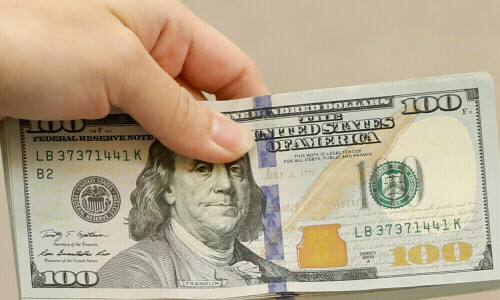Dollar Pauses After Initial Rebound
The dollar experienced a lull on Thursday, stabilizing after a significant recovery. This followed President Trump’s decision to step back from his threats regarding Federal Reserve Chairman Jerome Powell, coupled with indications from his administration of a potentially more flexible approach to tariffs on Chinese goods.
After falling below 140 yen earlier in the week, the dollar bounced back from a key support level, reaching 143.25 yen on Thursday.
Treasury Secretary’s Comments Provide Lift
The dollar received an additional boost from Treasury Secretary Scott Bessent’s statement that the U.S. doesn’t have a particular currency target, which came before discussions with his Japanese counterpart. Bessent also suggested that the existing de facto embargo on trade between the U.S. and China is not sustainable, while also noting that the U.S. would not be the first to reduce its tariffs which are over 100% on goods from China.
Euro and Other Currencies
The dollar has partially recovered from a three-and-a-half-year low of $1.1572 against the euro. However, it faced some selling pressure during the Asian trading session, settling around $1.1338.
ING currency strategist Francesco Pesole commented that the dollar is currently the currency most responsive to trade-related news.
Analyst Perspective
- “We continue to believe that the risk balance for the USD is tilted to the downside in the short term,” he stated.
- “We do not anticipate a repeat of the sustained dollar selling observed recently,” he added.
- “EUR/USD remains largely influenced by USD movements. A move above $1.15 is still possible if concerns about the Fed’s independence resurface.”
Other Currencies Affected
The Australian and New Zealand dollars also retreated from their recent highs, though not substantially.
The Australian dollar, which briefly surpassed $0.64 this week, was trading at $0.6361. Commonwealth Bank strategist Joe Capurso suggested that it might test resistance around its 50-day moving average at $0.6286, given ongoing concerns about global economic growth.
The New Zealand dollar remained steady at $0.5949.
Sterling and the Swiss franc both stabilized after a notable decline, with sterling at $1.3263 and the Swiss franc at 0.8290 per dollar.
China’s yuan remained stable at approximately 7.29 per dollar in early trading.



Comments (0)
No comments yet. Be the first to comment!
Leave a Comment